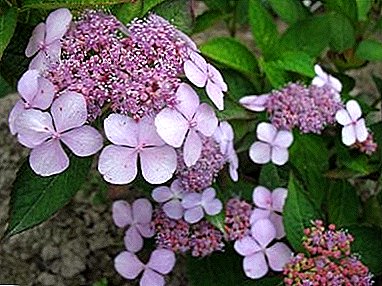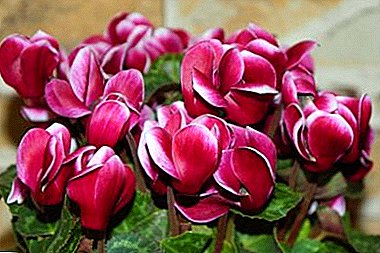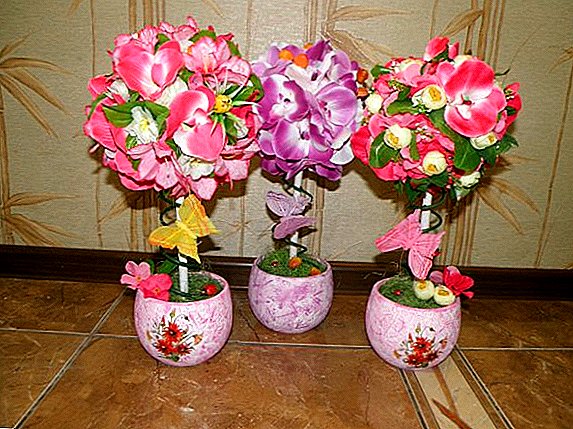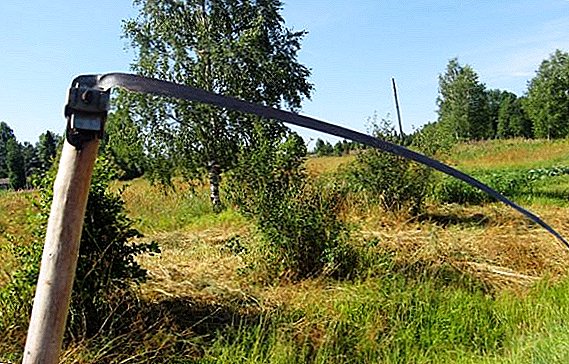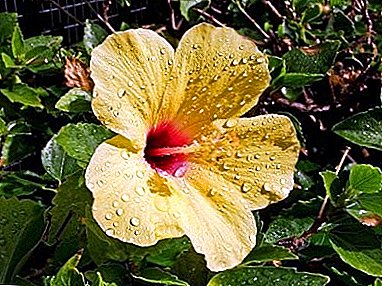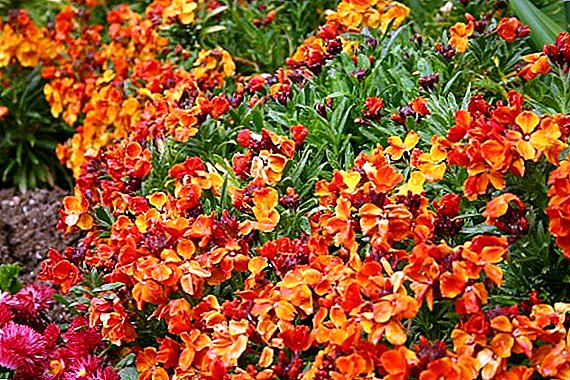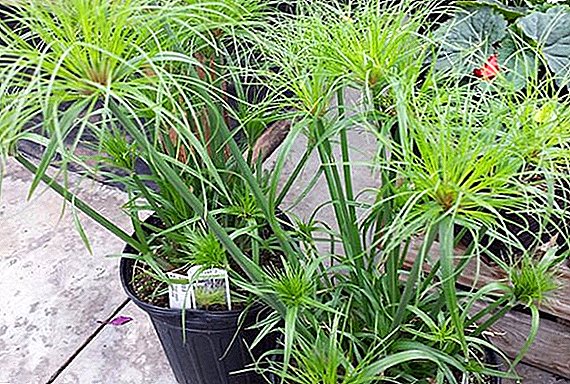
Gynura weaving - a perennial plant, the genus of which includes more than fifty species.
The name comes from the Greek name, which means "woman with a tail".
general description
Guinura foliage is incredibly beautiful: green leaves are carved and covered with purple nap. Along the edges of a purple hue more saturated. It was for the beauty of the foliage that the plant was called "woman." At ginura very long shoots, which are called "tail".
The leaves are so unusual and beautiful that ginura has become increasingly common in culture.
IMPORTANT! Gynura blooms long. A lot of flowers, but they smell unpleasant and are not particularly attractive, so some of them break off.
Since the flowers quickly lose their appearance, they should be removed after flowering. Abundant flowering leads to a shorter foliage, which spoils the whole beauty of the plant.
Visually see the gynura weaving can be in the photo below:




Care
Care after purchase
Gynura weaving unpretentious and not particularly demanding. She likes good light, and when there is a shortage of light, the leaves will fade.
Arrange the plant better on the windows facing west or east. When placed on a southern window-seat in summer, a flower is best applied. By the bright light ginuru better to teach gradually: Do not deprive the sun, but put away from the window. Gradually move the pot closer to bright light.
Pruning
The main problem of Guinura weaving - fast growth and stretching. In order to maintain the splendor of the foliage, it is necessary to pluck the tops of the shoots, then the sides will develop much better.
Thanks to the long shoots to form a crown can be to your taste. You can arrange the plant in the form of an arch, bending the wire with an arc and placing it along the edges of the tank. The arch should be carefully braided shoots, if necessary, fasten them with threads in several places.
Watering
Since the beginning of spring, the flower must be watered. very abundantly, but be sure to wait for the top coat to dry. The plant is very fond of good air moistening, so you should spray the place near the plant, not falling on the leaves because of the possible appearance of stains on them.
You can put a container with a flower on a tray filled with water or wet moss. Water from the pallet should not rise to the soil. Some put in a tray pebbles and add a little water.
IMPORTANT! In winter, the plant needs moderate watering. It is undesirable to allow dehydration, since gynura will start dropping leaves.
Once every 3 weeks the flower can be fertilized with special complex solution. This applies to the spring and summer periods. In winter, one feed is enough for a month and a half.
Planting and transplanting
 Gynura pletochnaya requires an annual transplant, the preferred time - Spring. Before the procedure, we water the flower intensively.
Gynura pletochnaya requires an annual transplant, the preferred time - Spring. Before the procedure, we water the flower intensively.
Then we start in a new pot with a large volume to fill the drainage system. On the drainage put a layer of sod land. You can purchase ready-made substrate for ampelous plants.
Ginur should be carefully pulled out of the old pot, without damaging the shoots. The root system should be cleared of old soil. Then the plant must be lowered into a new container and covered with roots with a new substrate.
Transplanted flower to activate the root system must be put in a shady place. A couple of days ginuru better not water. After adapting the flower can be put on the windowsill.
Growing up
Despite the fact that gynura weaving is considered a perennial plant, it is rarely kept for more than two years, as over time the color of the foliage begins to dim noticeably. Adult gynura poorly tolerate wintering compared to the young. When deciding to leave a flower for a long time, you need to prepare for the fact that you have to regularly cut an adult flower to propagate the plant or to cut him.
Breeding
Ginuru weaving propagated cuttings and seeds.
In an adult flower, a stalk is cut. 10 cm. Must be healthy leaves. The cut is treated with a special rooting drug. We put the cutting in a small container with a drainage system at the bottom.
The substrate is made from sod mixed with sand, better coarse. Next, you need to water and cover the stalk with a package. Remove the package daily for 5 minutes. The soil should always be hydrated. Gynura is transplanted into a permanent container after three weeks.
REFERENCE! Some growers root ginuru weaving in water.
Temperature
 This plant does not like too warm air. In spring and summer, it is better to keep ginuru at a temperature 20-23 degrees.
This plant does not like too warm air. In spring and summer, it is better to keep ginuru at a temperature 20-23 degrees.
In winter, the flower is best to ensure peace to preserve the appearance. During this period, place the plant pot in a cool room with a temperature of 12-15 degrees.
If we leave the ginura weaving in winter in a warm room, the decorative qualities of the flower will disappear.
In the spring the plant is better to endure on the balcony or in the garden. Can be transplanted for the summer period ginuru in open ground.
Lighting
Light for a flower should be diffused and sufficient. With a lack of light ginura change the color of the leaves.
Benefit and harm
Due to the fact that the flower grows very intensively, metabolic processes in the body are accelerated in humans.
Diseases and pests
Most often affects ginuru spider mite. When infected, the plant is treated Aktellik.
Sick flower is very rare, but if the leaves are chopped, lost their sophistication, it means that the plant gave all the power to the flowers. To correct this problem, you need to remove the buds and flowers.
 When black spots appear on the foliage, the plant should be sprayed more carefully so that large drops do not remain on the leaves. After the procedure, you can put the ginura in a shady place.
When black spots appear on the foliage, the plant should be sprayed more carefully so that large drops do not remain on the leaves. After the procedure, you can put the ginura in a shady place.
With sagging shoots, it is better to change the plant to a new one, since this means that the gynura has become old.
Despite the fact that the gynura weaving is considered a perennial plant, it maintains its exquisite elegant appearance a few yearsand then the plant is replaced with a new one or transplanted every spring with preliminary plucking of the tips of the shoots. The plant is rarely sick, but prefers care in compliance with light and temperature conditions.


